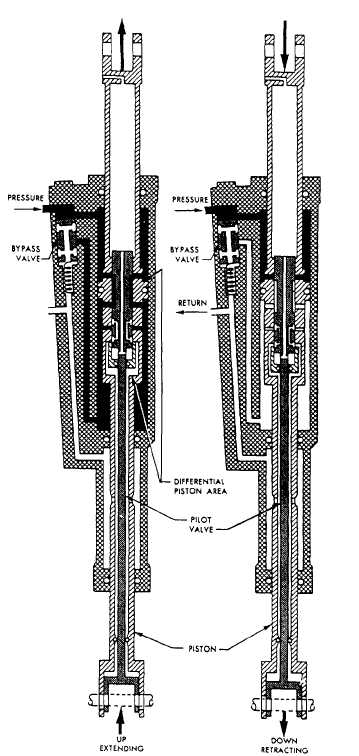|
Primary Servo Cylinders These three servo cylinders send flight control movements
to the stationary swashplate of the rotary-wing
head. If the primary hydraulic system is operating,
the servo cylinders hydraulically aid flight control
movement. If the power fails, they function only
as control rods. See figure 10-8. This is accomplished
by the spring-loaded bypass valve, which
prevents hydraulic lock and a sloppy link pilot valve
connection. The pilot valve and the lower clevis
of the power piston connect to the flight control linkage
by the same bolt. There is a very close tolerance
in the pilot valve connection. This tolerance causes
the pilot valve to operate before the power piston
clevis. The power piston is then mechanically displaced.
Fluid under pressure entering the servo cylinder upper
port closes the bypass valve and enters the upper
chamber. With the pilot valve in neutral, fluid cannot
escape from the lower chamber, and the piston remains
motionless. If the pilot valve moves upward, fluid
flows into the lower chamber. The piston will rise
because of a pressure area differential. If the pilot valve
moves down, the fluid in the lower chamber flows
to return. The piston will be forced downward by
upper chamber pressure.

Figure 10-8.Primary servo cylinder.
When flight control movements stop, the piston will
continue to move until the ports of the pilot valve close.
The pilot valve clevis will be in the center of the
sloppy link. When pressure is off, the bypass valve
will open, preventing hydraulic lock.
|
|

